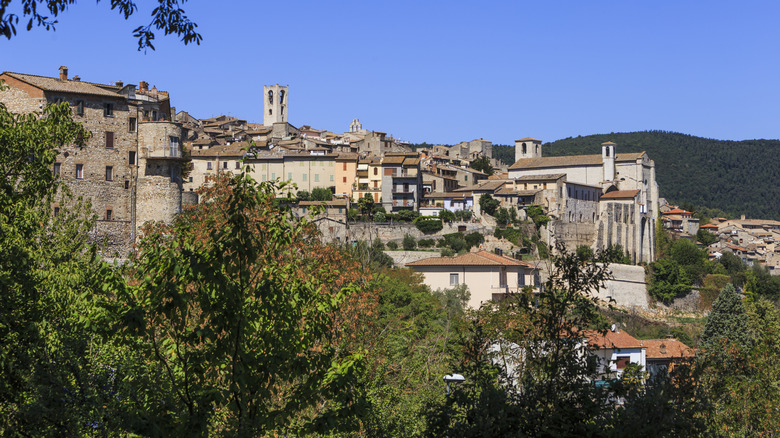A Hidden Gem in Umbria That Inspired Narnia's Magic

A Hidden Gem in Umbria: Narni
Just an hour north of Rome, Italy, lies a charming town that is rich in culture, history, and natural beauty—Narni. Nestled in the heart of southern Umbria, this quaint village offers breathtaking views of the Nera Valley and a fascinating prehistoric past that can be explored through its secret underground city. Known for inspiring the "Chronicles of Narnia," Narni is more than just a literary reference; it's a destination that captures the essence of an Italian hill town with its ancient cathedrals, cobblestone streets, and timeless charm.
The Origins of Narni
Although British writer C.S. Lewis likely never visited Narni, his biographer and former personal secretary, Walter Hooper, confirmed that Lewis was inspired by Roman history when creating the fictional world of Narnia. Lewis had a Latin atlas in which he underlined the name "Narnia," and he later shared with Hooper that this name influenced his famous series. In 2009, Hooper gifted a copy of the author's atlas to Narni’s local historian, further connecting the town to the literary legend.
The history of Narni dates back thousands of years. Evidence suggests that people inhabited the area long before the Romans named it Narnia. Artifacts found in nearby regions, such as the tusks of Elephas antiquus from Taizzano, indicate early human presence. The town itself was established around 1000 B.C. by the Osco-Umbrian people, who called it Nequinum. By 299 B.C., the Romans had taken control and renamed it Narnia. It became a significant stop on the Via Flaminia, a major trade route connecting Rome to the Adriatic Sea. While the exact date of the name change to Narni remains unclear, the town continues to hold a wealth of hidden and historic charm.
Narni Sotterranea: The Underground City
One of the most intriguing attractions in Narni is Narni Sotterranea, also known as Narni Underground. This hidden city was accidentally discovered in 1977 through an opening in a vegetable garden. Speleologists gained access to a complex network of vaults, secret chambers, a courtroom, and a prison cell connected to a 13th-century church adorned with vibrant frescoes.
A recent visitor to Narni Sotterranea described the experience as "silent and fascinating." They highlighted the cell of the Holy Inquisition, once part of the Tribunal of the Holy Office, where prisoners left original graffiti. The tour also included an ancient Roman aqueduct and other tunnels still under excavation and study, offering a glimpse into the town’s mysterious past.
Exploring Narni Through the Seasons
Narni is a year-round destination, each season offering unique experiences. Spring, from April to June, is ideal for outdoor adventures. A short 17-mile drive leads to the Marmore waterfalls, or Cascata delle Marmore, one of the world's tallest man-made waterfalls. There are six hiking trails within the park, each varying in difficulty, providing different perspectives of the 541-foot falls.
In May, Narni hosts the medieval festival "Corsa all'Anello" (Race of the Ring), celebrating the city’s patron saint, Saint Juvenal. The event features historical reenactments, live performances, and a horse race, bringing the town's past to life.
During the summer months, temperatures can reach up to 104 degrees Fahrenheit. To escape the heat, visitors can enjoy the natural springs at Stifone, particularly the popular Sorgente della Morica. This deep pool of pure blue-green water offers a refreshing dip even during the hottest days.
Fall is a peaceful time to explore Narni. The changing seasons provide a serene backdrop for walking tours through the medieval streets. Visitors can visit historic sites like the Auditorium Bortolotti, the Cathedral of San Giovenale, and the Narni Underground. After a day of exploration, dining at I Ghibellini offers traditional Umbrian cuisine, including handmade Manfricoli pasta and local wine with panoramic views of the hill town.
From the rolling hills to the ancient architecture, Narni offers the vibes of Tuscany without the crowds, making it a perfect destination for those seeking an authentic Italian experience.
Post a Comment for "A Hidden Gem in Umbria That Inspired Narnia's Magic"
Post a Comment